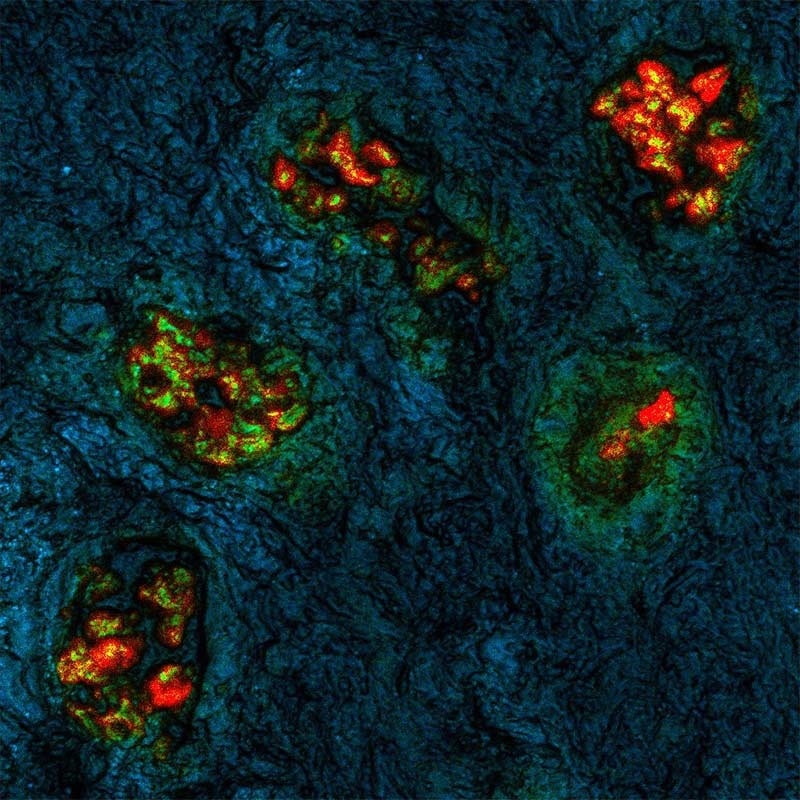Reviewed by Danielle Ellis, B.Sc.Oct 17 2023
Surgeons often face the challenge of achieving precise tumor removal while preserving healthy tissue. Traditionally, they rely on their visual and tactile senses to determine where to make incisions.

Image Credit: Mass General Brigham
However, a team led by researchers from Mass General Brigham has introduced a visualization tool that leverages high-speed cameras and fluorescent injection to differentiate tumor tissue from normal tissue, irrespective of cancer type. This innovative imaging technology, known as fluorescence lifetime (FLT) imaging, was evaluated using samples from over 60 patients who underwent surgeries for various cancers.
The team's findings, published in Nature Biomedical Engineering, revealed that this technique achieved over 97% accuracy across different tumor types, offering the potential to enhance the precision of cancer surgeries.
This has been a thrilling collaboration with leading surgeons and pathologists from five hospitals in the US and Europe. Our lab has been studying fluorescence lifetime imaging since 2002, but this is the first time that anyone has combined it with tumor imaging and injectable dyes in humans. By doing so, we’ve developed a technique for accurately distinguishing tumor tissue from healthy tissue across cancer types.”
Anand Kumar PhD, Study Corresponding Author and Associate Professor, Radiology, Athinoula A. Martinos Center for Biomedical Imaging, Massachusetts General Hospital
In the development and testing of this technology, Dr. Kumar and his team collaborated closely with colleagues at Mass Eye and Ear, which is also a part of the Mass General Brigham healthcare system. This collaboration occurred within the context of patient treatment for head and neck cancer at Mass Eye and Ear.
This technology has taken us to the brink of a revolution in solid tumor surgery. By using the advanced imaging techniques combined with the dye, surgeons in the near future will have the ability to more completely remove all malignant cells during tumor surgery while at the same time, with confidence, spare normal tissue, enhancing postoperative function and in some cases, the patient’s appearance.”
Mark Varvares, Chief of Otolaryngology–Head and Neck Surgery, Mass Eye and Ear
Mass General Brigham is a consortium of 16 member institutions, comprising academic medical centers, specialized hospitals, community hospitals, a rehabilitation network, and various other healthcare facilities. Research conducted across these multiple entities is synergistic, offering a holistic perspective and insights that extend beyond the individual contributions of each institution. This collaborative approach draws on diverse settings and a wide range of expertise to enhance the overall quality of research and healthcare delivery.
Numerous technologies have been explored to enhance tumor visualization during surgical procedures, such as fluorescence imaging and advanced microscopy. However, the widespread adoption of these technologies has been limited, and many are primarily applicable to specific cancer types or subtypes.
Fluorescence imaging, for instance, relies on dyes that target cancer-specific molecules. Yet, conventional imaging methods may have limited accuracy in identifying tumor margins, the areas where normal tissue surrounds the tumor, due to the variability in the expression of these molecules across and within different tumor types.
The approach employed by the Mass General Brigham research team, known as fluorescence lifetime (FLT) imaging, offers a unique perspective. Rather than relying solely on cancer-targeting dyes, this technique uses high-speed cameras to identify changes in the light emitted by tissue.
In earlier preclinical studies with mouse models, Dr. Kumar and his colleagues observed that tumors in mice injected with a dye called indocyanine green (ICG) exhibited a longer fluorescence lifetime in comparison to normal tissue. This distinction enabled the researchers to accurately differentiate between tumor tissue and healthy tissue.
In their recent study, the research team applied the same principle to human samples. The study commenced by examining specimens from patients who were undergoing liver surgery at Massachusetts General Hospital (MGH) and head and neck surgery at Mass Eye and Ear. These patients had received an injection of indocyanine green (ICG) at least a day prior to their respective surgeries.
Expanding upon their initial research, the team engaged in a collaborative effort across multiple institutions to assess samples from over 60 patients who had various cancer types. These patients, treated at MGH, Mass Eye and Ear, the University of Pennsylvania, the University of Newcastle in the UK, and Leiden University in the Netherlands, represented a range of cancer types, including liver, brain, tongue, skin, bone, and soft tissue.
The research team successfully identified a consistent FLT (fluorescence lifetime) shift at the cellular level, which remained uniform across various tumor types and among multiple patients. Moreover, the technique exhibited the capability to differentiate between benign and metastatic lymph nodes. In summary, it displayed a high level of accuracy, surpassing 97%, in distinguishing between tumor tissue and healthy tissue.
The authors point out that while indocyanine green (ICG) is FDA-approved for various purposes, it has not yet received approval for clinical use as a tumor-marking agent. The researchers' forthcoming objective is to conduct a more extensive clinical trial to assess the safety and effectiveness of fluorescence lifetime imaging with ICG for identifying tumors during surgical procedures.
Our work suggests that the combination of fluorescence lifetime imaging with ICG could improve surgical resections, thereby impacting patient lives. We’re excited to take these next steps to move our discoveries closer to clinical impact.”
Anand Kumar PhD, Study Corresponding Author and Associate Professor, Radiology, Athinoula A. Martinos Center for Biomedical Imaging, Massachusetts General Hospital
Source:
Journal reference:
Pal, R., et al. (2023) Fluorescence lifetime of injected indocyanine green as a universal marker of solid tumours in patients. Nature Biomedical Engineering. doi.org/10.1038/s41551-023-01105-2.